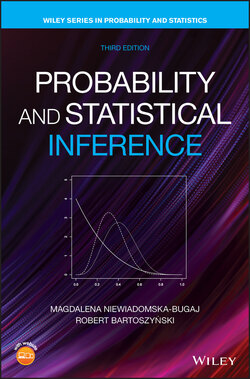Читать книгу Probability and Statistical Inference - Robert Bartoszynski - Страница 95
Example 3.14
ОглавлениеSuppose that one needs the value of the coefficient of in the expression . One could argue that in the multiplication there are 10 factors, and each term will contain one component from each set of parentheses. Thus, choosing from 2 out of 10 pairs of parentheses, from 3 out of 10, and so on, amounts to partitioning 10 pairs of parentheses into four classes, with sizes and . The total number of ways such a partition can be accomplished is the coefficient of , and equals .
An approximation to is given by the so‐called Stirling's formula.
Theorem 3.4.3 (Stirling's Formula) We have
(3.29)
where the sign means that the ratio of the two sides tends to 1 as .
We shall not give the proof here, but interested readers can find it in more advanced texts, for example, in Chow and Teicher (1997).
